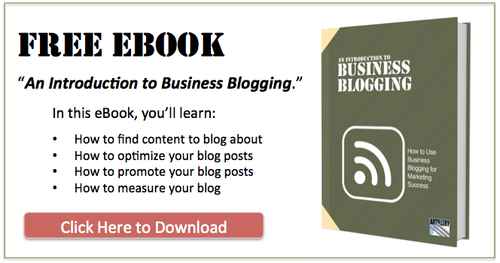Are you frustrated trying to explain how a blog can generate leads? Start with the facts. Then use an old school example that was ahead of its time.

One of the biggest changes in recent marketing history is that companies no longer must go through a media gatekeeper in order to reach their prospective customers.
In the past, companies had to, as David Meerman Scott says, “buy, beg or bug” to get attention:
“1) You can BUY attention. (This is called advertising). 2) You can BEG for attention. (This is called Public Relations). 3) You can BUG people one at a time to get attention. (This is called sales).”
And while there’s nothing evil about those approaches, they are increasingly less effective. People can tune out unwanted marketing messages with greater ease and success every year thanks to technology like DVRs, caller ID, ad blocking software, RSS readers, satellite radio and podcasts, to name just a few.
Marketing Has Gone From Checkers to Chess
What’s so different now is that you can produce your own content and communicate with whomever you wish. Using blogs, videos, podcasts, social media and email, you can establish and deepen relationships with any audience you’d like to reach. The only catch is that you need to offer content people are interested in.
A popular mantra is that all companies are now media companies. They just don’t all understand that yet. That’s because old habits die hard. Particularly with executives who came of age when the order of the marketing universe was to interrupt your way into your customer’s consciousness.
But in fairness to all executives, including marketing executives, there’s an overwhelming amount of change going on:
- 76% of marketers think marketing has changed more in the past two years than the previous 50 (Adobe).
- 90% of companies lack necessary digital skills in key areas of social media, mobile, internal social networks, process automation, and performance monitoring and analysis (CapGemini).
Wake Up And Smell The Blogs
Fortunately, more companies are beginning to grasp that one of the most important things to implement for modern marketing is blogging.
“No matter what, the very first piece of social media real estate I’d start with is a blog.” ~Chris Brogan
Blogs are simply articles posted to a section of your website (in reverse chronological order) that include the ability for readers to make comments and use social media to share the content. You’re reading a blog right now.
A blog is by far the most important means of increasing the right kind of traffic to your site and converting visitors to leads. And as an added bonus, the more that you blog, the more people will perceive you as an expert.
Creating helpful content will also help with your search engine rankings. Other sites are more likely to link to yours if you are publishing helpful content – and that boosts your rankings and helps improve your website’s discoverability.
Marketing Is Moving From The Megaphone To The Magnet
These days, marketing and business development people are spending a lot of time explaining modern marketing approaches to their colleagues and management.
And it can be difficult to do because of institutional muscle memory of wanting to use interruptive marketing tactics to get attention. At times I think it must have been a similar challenge for Copernicus 500 years ago. He’s the guy who tried to explain that the Earth revolves around the Sun rather than the opposite. He got a lot of pushback.
That’s why the “old school” expression comes up in marketing circles. That term is generally associated with older people, but it’s actually more of a mindset. I know younger people who have an old school impulse for marketing.
But there are still a lot of older executives who have the old school mindset. They are more comfortable with a megaphone marketing approach than using interesting and helpful content as a magnet to attract attention.
Don’t lose hope – there’s a trick that has helped me get a number of old school executives to see the blogging light to use helpful content to attract interest, traffic, leads and sales.
The Shell Answer Man
Are you are dealing with an executive who might have been in front of a television at some point during the 1960s to the 1990s? Chances are they would have seen ads featuring The Shell Answer Man.
In this long-running campaign, Shell Oil would answer common questions from the public about driving, with advice on vehicle maintenance, repair and safety.
The ads were informative and helpful. They established Shell as a trusted authority. They were not boastful about how great Shell Oil was. They also helped sell a lot of fuel and vehicle care, which is why the campaign continued for so long.
The Shell Answer Man was a modern approach to marketing in an era of old school tactics.
When I explain the purpose of blogging to executives who came of career age in the pre-Internet era, The Shell Answer Man example gets the light bulbs to turn on.
At that point, old schoolers start to grasp the idea that their blog should answer customer questions, be helpful and interesting. Just like the Shell Answer Man.

photo credit: Board of Public Works, 1954 via photopin (license)
(218)






